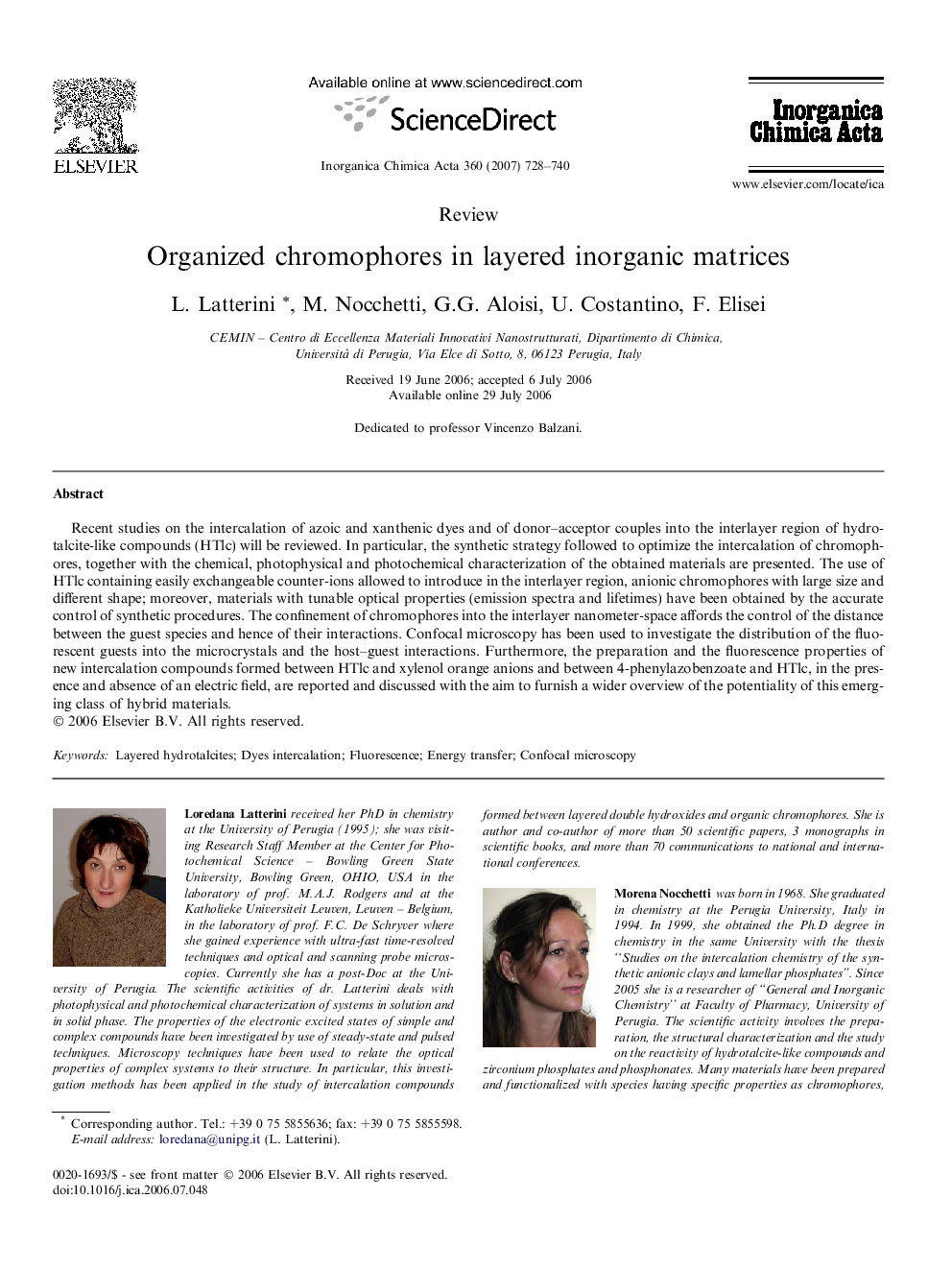| Article ID | Journal | Published Year | Pages | File Type |
|---|---|---|---|---|
| 1312749 | Inorganica Chimica Acta | 2007 | 13 Pages |
Recent studies on the intercalation of azoic and xanthenic dyes and of donor–acceptor couples into the interlayer region of hydrotalcite-like compounds (HTlc) will be reviewed. In particular, the synthetic strategy followed to optimize the intercalation of chromophores, together with the chemical, photophysical and photochemical characterization of the obtained materials are presented. The use of HTlc containing easily exchangeable counter-ions allowed to introduce in the interlayer region, anionic chromophores with large size and different shape; moreover, materials with tunable optical properties (emission spectra and lifetimes) have been obtained by the accurate control of synthetic procedures. The confinement of chromophores into the interlayer nanometer-space affords the control of the distance between the guest species and hence of their interactions. Confocal microscopy has been used to investigate the distribution of the fluorescent guests into the microcrystals and the host–guest interactions. Furthermore, the preparation and the fluorescence properties of new intercalation compounds formed between HTlc and xylenol orange anions and between 4-phenylazobenzoate and HTlc, in the presence and absence of an electric field, are reported and discussed with the aim to furnish a wider overview of the potentiality of this emerging class of hybrid materials.
Graphical abstractEffect of the chromophore packing inside the interlayer region of Zn–Al–HTlc on the emission spectra of the chromophore as a consequence of co-intercalate removal water (anhydrous, close symbols and hydrated sample, open symbols) supported by the computer generated models for the same samples.Figure optionsDownload full-size imageDownload as PowerPoint slide
